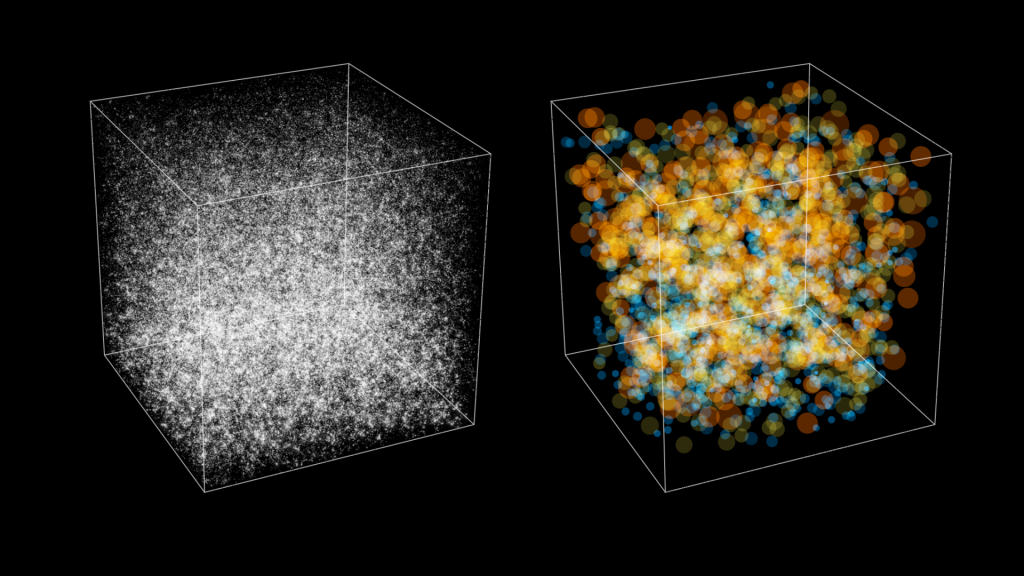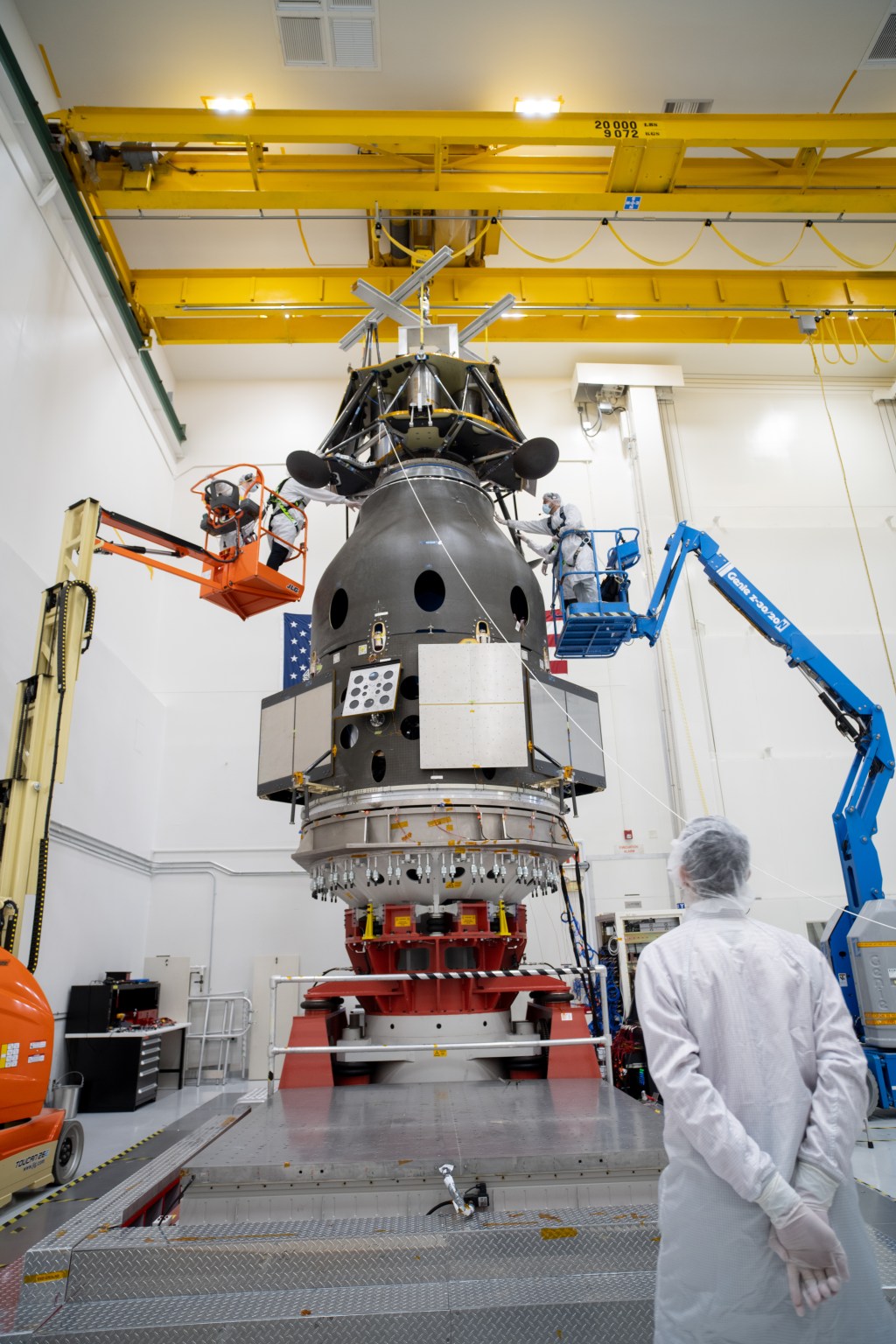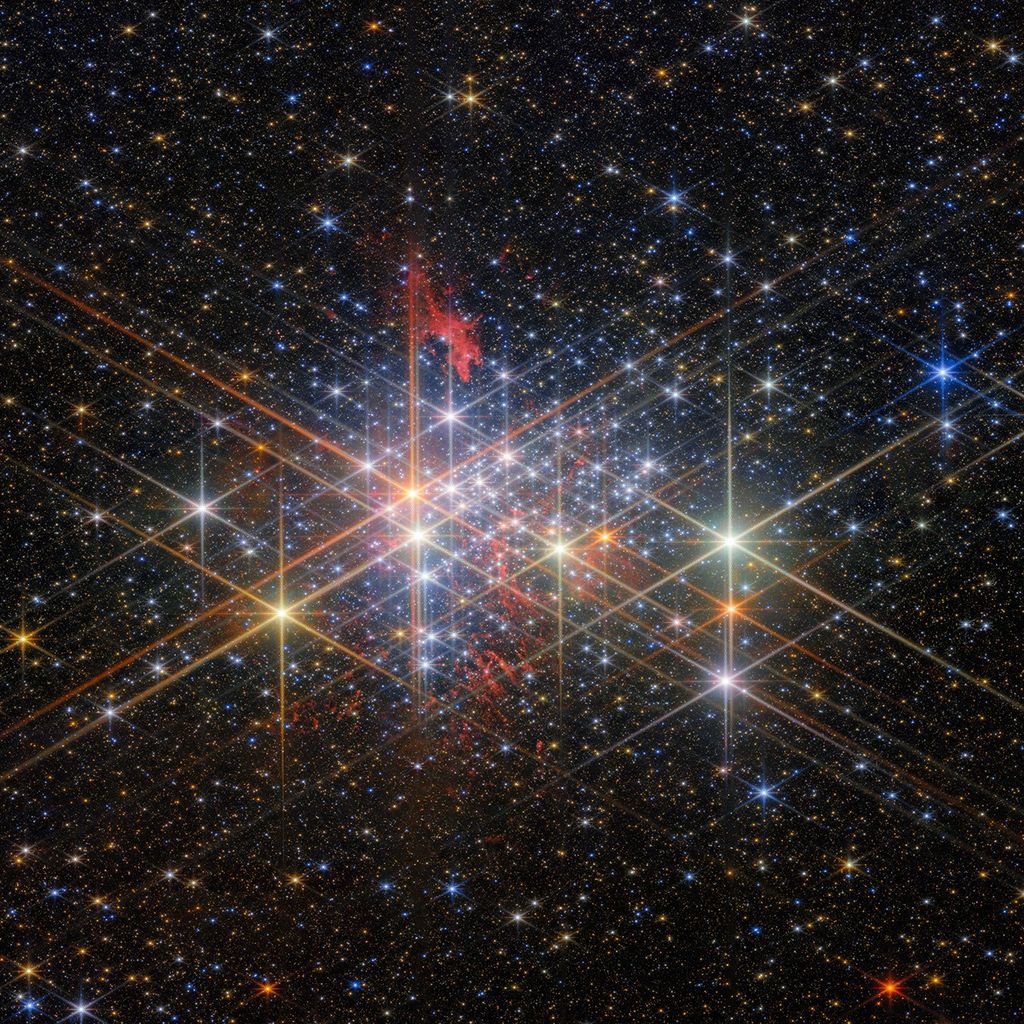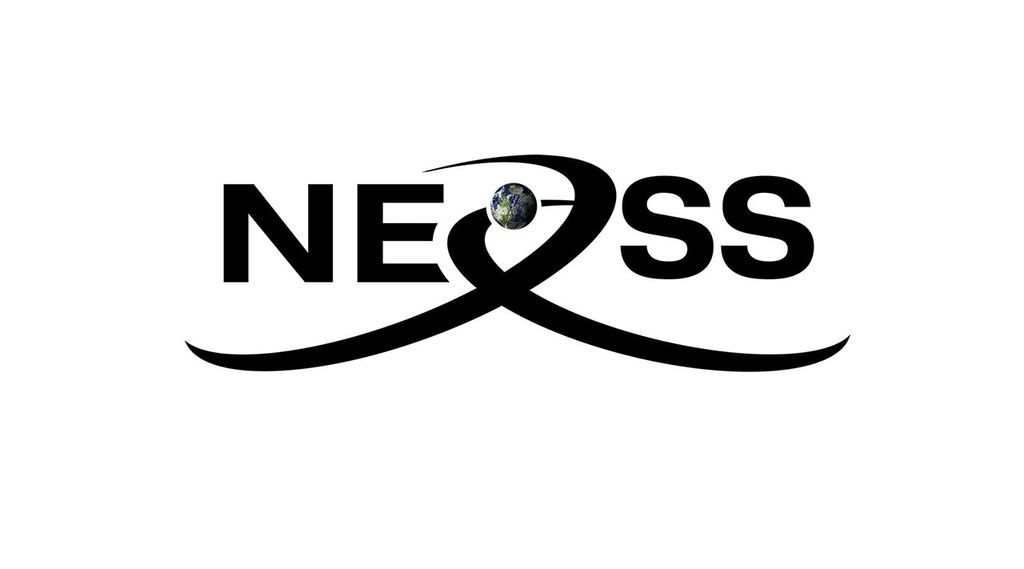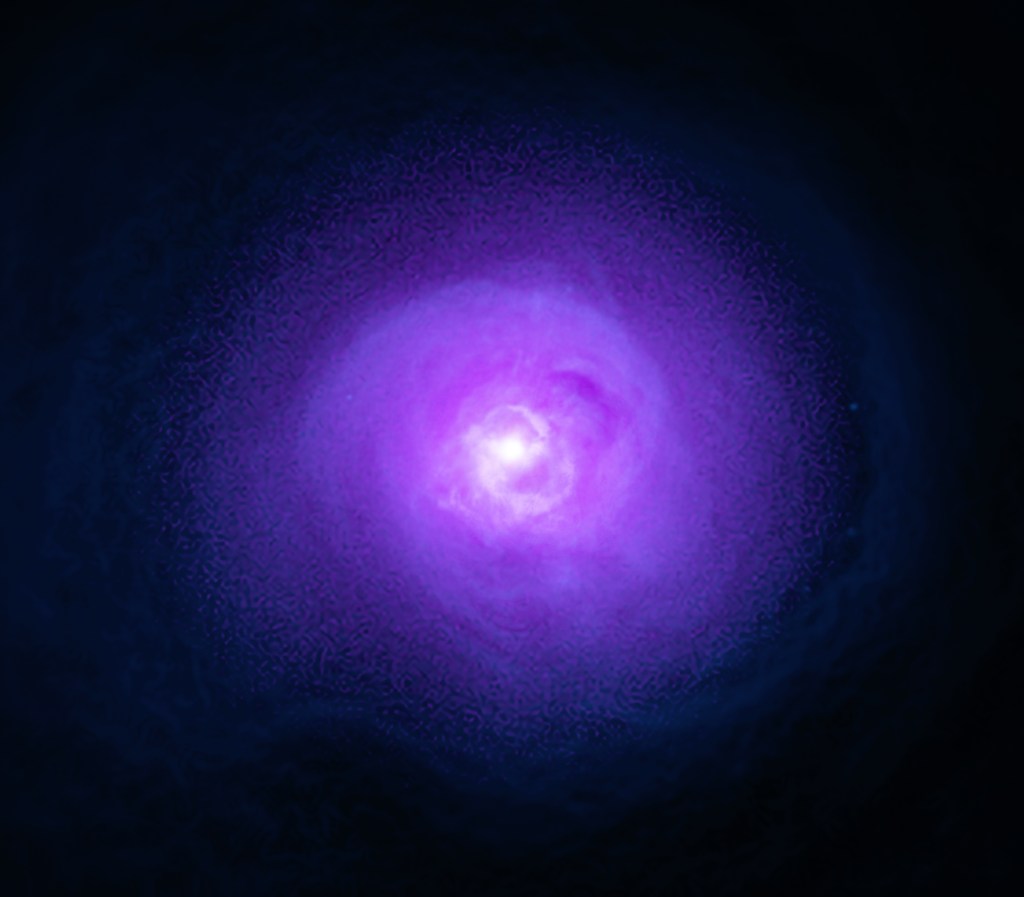1 min read
Hubble Reveals Young Starburst Activity in Colliding Galaxies

[Right] A NASA Hubble Telescope (HST) image of NGC 1741, a pair of colliding galaxies are undergoing a burst star formation as a result of a collision.
The results from this observations are being presented to the American Astronomical Society meeting in Berkeley, California.
The Hubble pictures illustrates dramatic new details of the starburst phenomena that result from the merger between to galaxies. NGC 1741 contains a pair of starburst centers that are separated by 3,000 light-years (4 arc seconds at the galaxy's distance of 50 Megaparsecs). The HST image resolves several very young and compact starburst regions about 150 to 300 light-years across, which are embedded in double-lobed structure. Each contains several hundred to a thousand recently formed massive stars. HST reveals for the first time more luminous (and contain several times as many hot stars) as 30 Doradus, a nearby prototype starburst in the Large Magellanic Cloud.
Previous ground-based spectroscopic studies show that the most massive stars are less than ten million years old, and burst of massive stars such as these have occurred only for a million years or less. The HST UV picture was taken using the European Space Agency's Faint Object Camera (FOC).
The investigators hope to obtain HST spectra of the individual starburst knots in NGC 1741 once HST's optics are improved during a Space Shuttle servicing mission scheduled for late 1993. The spectra will allow astronomers to more accurately estimate the ages of the hot stars in each clump. This would show whether the individual starburst knots have formed simultaneously or sequentially.
[Left] A ground based telescopic image of galaxy NGC 1741 is located 150 million light-years away in the constellation Eridamus. The galaxy's peculiar shape and double-lobed structure is evidence for a recent merger between two galaxies.
About the Object
- R.A. PositionR.A. PositionRight ascension – analogous to longitude – is one component of an object's position.05h 1m 38.29s
- Dec. PositionDec. PositionDeclination – analogous to latitude – is one component of an object's position.-4° 15' 24.99"
- Object NameObject NameA name or catalog number that astronomers use to identify an astronomical object.NGC 1741
- Release DateJune 8, 1993
- Science ReleaseHubble Reveals Young Starburst Activity in Colliding Galaxies
- Credit
Share
Details
Claire Andreoli
NASA’s Goddard Space Flight Center
Greenbelt, Maryland
claire.andreoli@nasa.gov



